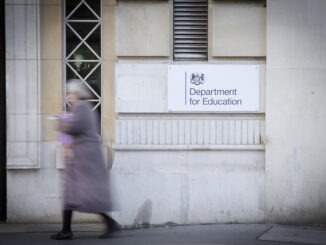
Simon Hepburn, founder of Marketing Advice for Schools, explores the potential for income generation that every school has and looks at some innovative ways to make necessary savings
This year is set to be a difficult financial one for many schools – a survey in September by the NAHT union found that over one–in-three headteachers were having to make cuts and one-in-four predicting their budgets would be in deficit.
How can schools respond? There are three key areas to look at – finding extra money, cutting back on spending and maximising your school roll. Find some expert advice in each area below!
Generate extra income
Justin Smith of Chameleon Consulting and Training has worked with many schools on income generation and suggests the following actions in the current climate.
- Events and grant applications used to be the mainstay of many schools’ fundraising activities, but these have been the most affected by COVID – a survey by ParentKind suggests by as much as 60%. Instead, explore options for crowdfunding (either directly or via commission-based programme such as Amazon Smile or the Co-op Local Community Fund), local business support and sponsorship or lettings.
- Focus your fundraising on a high priority area and make sure you have the full and visible support of your while community; there’s a strong correlation between an externally-focused culture and effective community engagement.
- Make it easy for people to find out more about your fundraising – via your website, newsletters and social media – and to make donations – perhaps via a platform such as Invest My Community (investmycommunity.com).
- Don’t be shy about asking for donations – send personal messages showing the impact of fundraising with a clear ‘call to action’.
- Capture evidence of your success – this will be useful when you move onto further projects or when grant providers re-open their programmes.
Look carefully at your costs
Sally Williams-McGlone, a school resource management adviser, and tutor on the ISBL Integrated Curriculum Financial Planning (ICFP) courses has some sound advice on looking at costs.
- It’s important to have the latest, accurate information about your spending so that you can analyse it effectively – you need to set aside time to do this on a regular basis and ensure you are working on consistent formulae. Integrated curriculaum financial planning (ICFP) isn’t a totally new idea; it provides a process which lets you calculate key metrics and ratios and then benchmark and analyse your resource management. You should think about whether you are spending the right amounts on the right things, at the right time, considering your own context.
- Generally, primary schools tend to have less expertise than secondary schools in ICFP so it’s important that both headteachers and business managers are involved in the planning and budgeting process in order to to reap the full benefits.
- Schools often look at areas like utilities to try to make savings (‘switch lights off’) but they (and other fixed costs such as rates, refuse collection and exam fees) are fairly resistant to cost-cutting and, indeed, recent increases in energy prices make it very difficult to find savings. Instead, look at staffing costs first. This can be a sensitive area but, in almost all schools, staff costs account for around three-quarters of a school’s revenue income. If you’re spending more than this, it is almost certainly at the cost of areas such as building maintenance, ICT-refresh and classroom resources.
- Don’t agree to new ‘nice to have’ items at the start of the year; instead, keep a contingency fund to meet unexpected costs (COVID has shown how important this is) and use remaining balances to fund non-essential items at the end of the year.
Maximise the number of children in your school
This is an area I’ve been working with a number of schools from around England on. Here are a few key suggestions I’ve made recently.
- Plan well ahead – with a falling birth-rate in most parts of the country affecting primary schools, and COVID and Brexit causing significant community movement, even full schools need to be closely monitoring application numbers and looking to see if other schools are opening nearby, or changing their offerings.
- Don’t assume that a great OFSTED rating will see you through this – it can actually deter parents from applying if they think your school is ‘always full’!
- Let your students tell their story. Research from Parent Ping showed that the top factor for parents choosing a school is an ‘inclusive ethos where all pupils are valued’ – in order to see this they need to be able to see inside the everyday life of a school, whether on a physical visit or via a virtual tour.
- As with financial planning, above, there are key numbers and ratios to look at; how many people are applying to your school, how many are visiting, and so on. Assistance in filling in forms, additional visits and a reminder of key dates can help parents move through the process – especially where this hasn’t been possible recently due to lockdowns.
- Fill gaps in all year groups – there has been a lot more movement of children between schools recently, driven, in part, by parents’ experience of remote learning. Don’t shy away from sharing where you have places.
Try some of these tips to help beat those budget blues and generate some income for your school during a hard financial period.



Be the first to comment